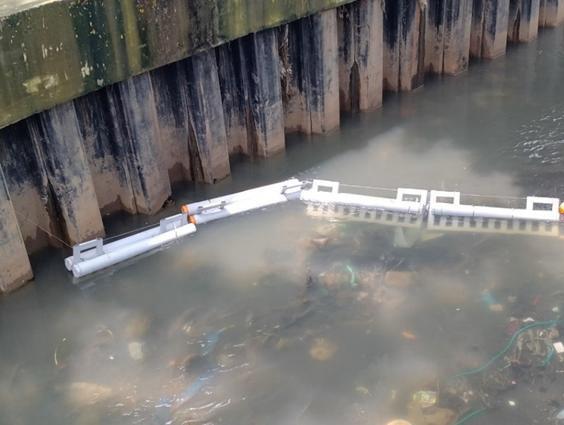Manila Water’s Project i-Float gets global recognition for flood mitigation

Riza Oiga, head of Manila Water’s Wastewater Facilities Operations Department, presents Project i-Float at the 41st International Association for Hydro-Environment Engineering and Research (IAHR) World Congress in Singapore.
MANILA, Philippines – Manila Water’s innovative initiative, Project i-Float, has received international recognition for its practical approach to urban flood mitigation.
Presented at the 41st International Association for Hydro-Environment Engineering and Research (IAHR) World Congress and the Singapore International Water Week (SIWW) Spotlight 2025, the project showcases how simple engineering solutions can deliver meaningful impact to communities.
The project was presented by Riza Oiga, Operations Department head for Wastewater Facilities, and developed in collaboration with Christian Quintos and Marvin Jambre.
It has received full support from Manila Water for its innovative approach and potential to strengthen flood resilience across Metro Manila.
Project i-Float uses floating bar screens to trap solid waste in waterways like Balante Creek in Marikina City.
These screens prevent blockages, allowing water to flow freely and reducing the risk of flooding.
Since its launch, the project has helped protect over 180,000 residents from seasonal floods and improved the performance of the Marikina North Sewage Treatment Plant by enhancing water flow and treatment efficiency.

Manila Water’s Project i- Float uses floating bar screens to trap solid waste in waterways like Balante Creek in Marikina City. During its pilot phase, the screens collected around 24 cubic meters of waste monthly, resulting in fewer floods between August and November 2024.
During its pilot phase, the screens collected around 24 cubic meters of waste monthly, contributing to fewer flood incidents between August and November 2024.
The project aligns with the goals of Angat Buhay, a non-government organization focused on community empowerment and disaster resilience.
Under its Women Champions in the Water Sector Program, Angat Buhay supported the presentation of Project i-Float at the IAHR World Congress, recognizing it as a model of grassroots innovation and collaborative problem-solving.
“Project i-Float proves that innovation doesn’t always mean complexity. With the right partnerships and practical tools, we can build safer, more resilient communities,” Oiga said.
Manila Water plans to expand the project to other flood-prone areas such as Pasig City, Taguig City and Navotas City.
With support from the Manila Water Foundation and local government units, the next phase will feature modular designs and cost-effective materials tailored to different urban environments across the Philippines.